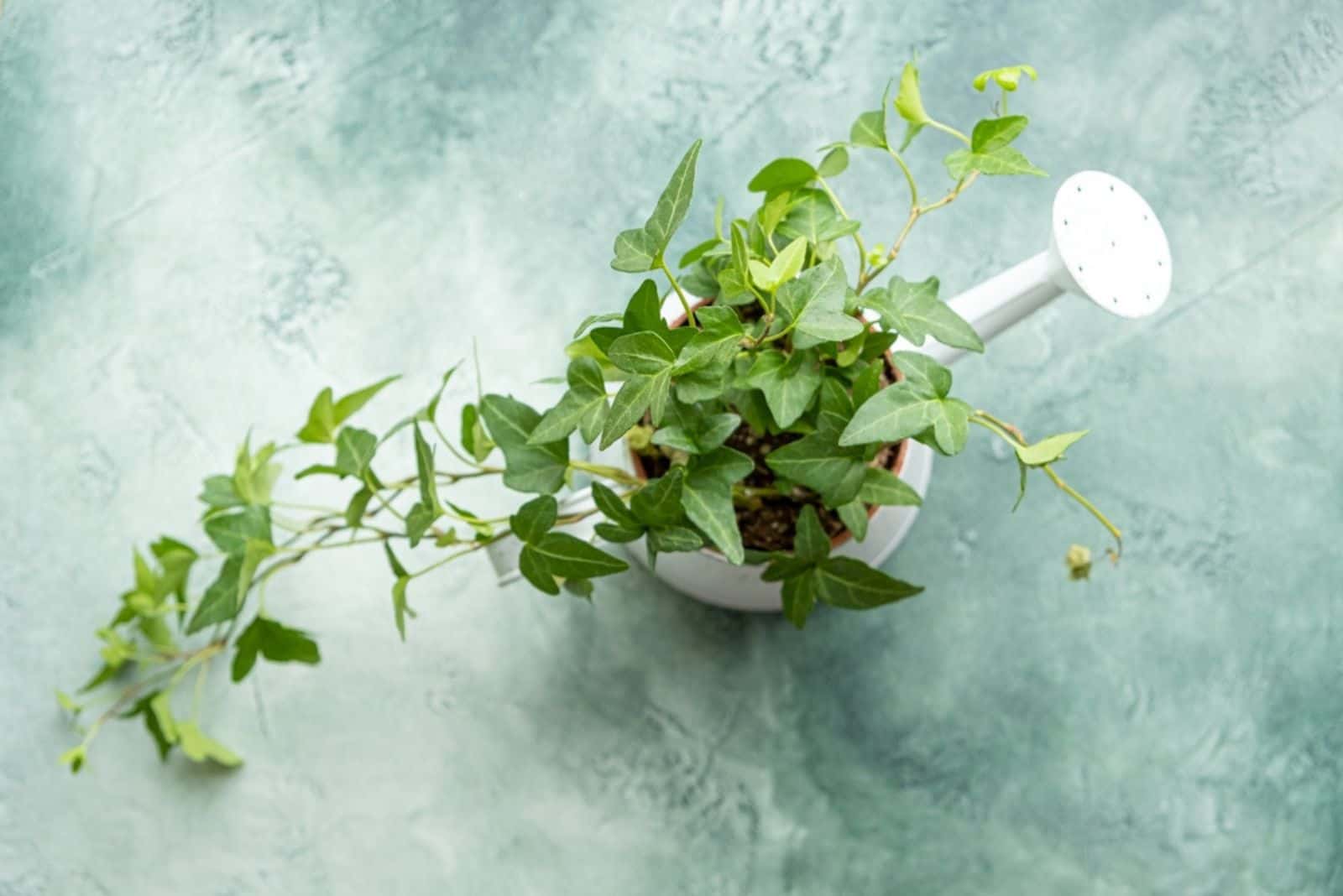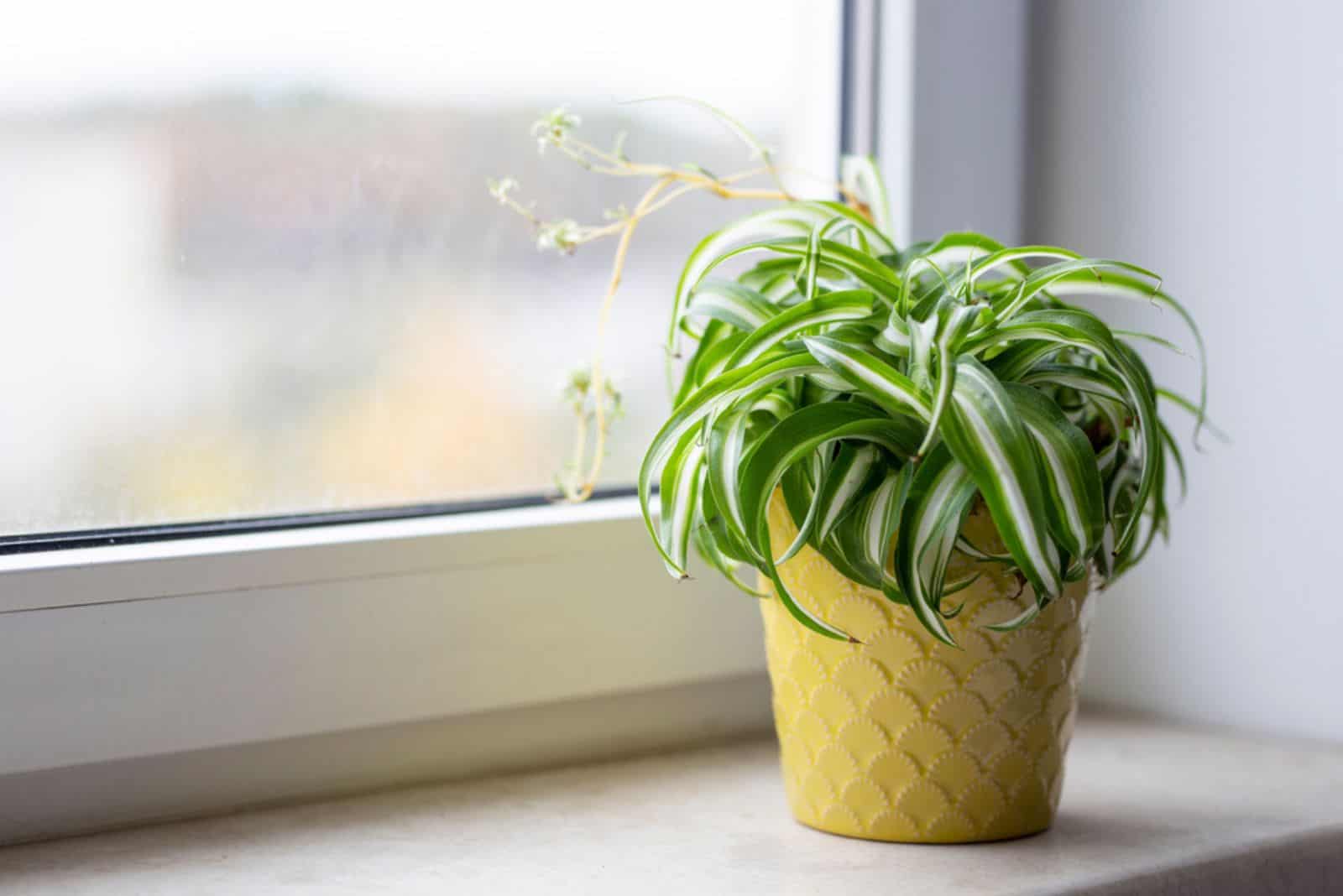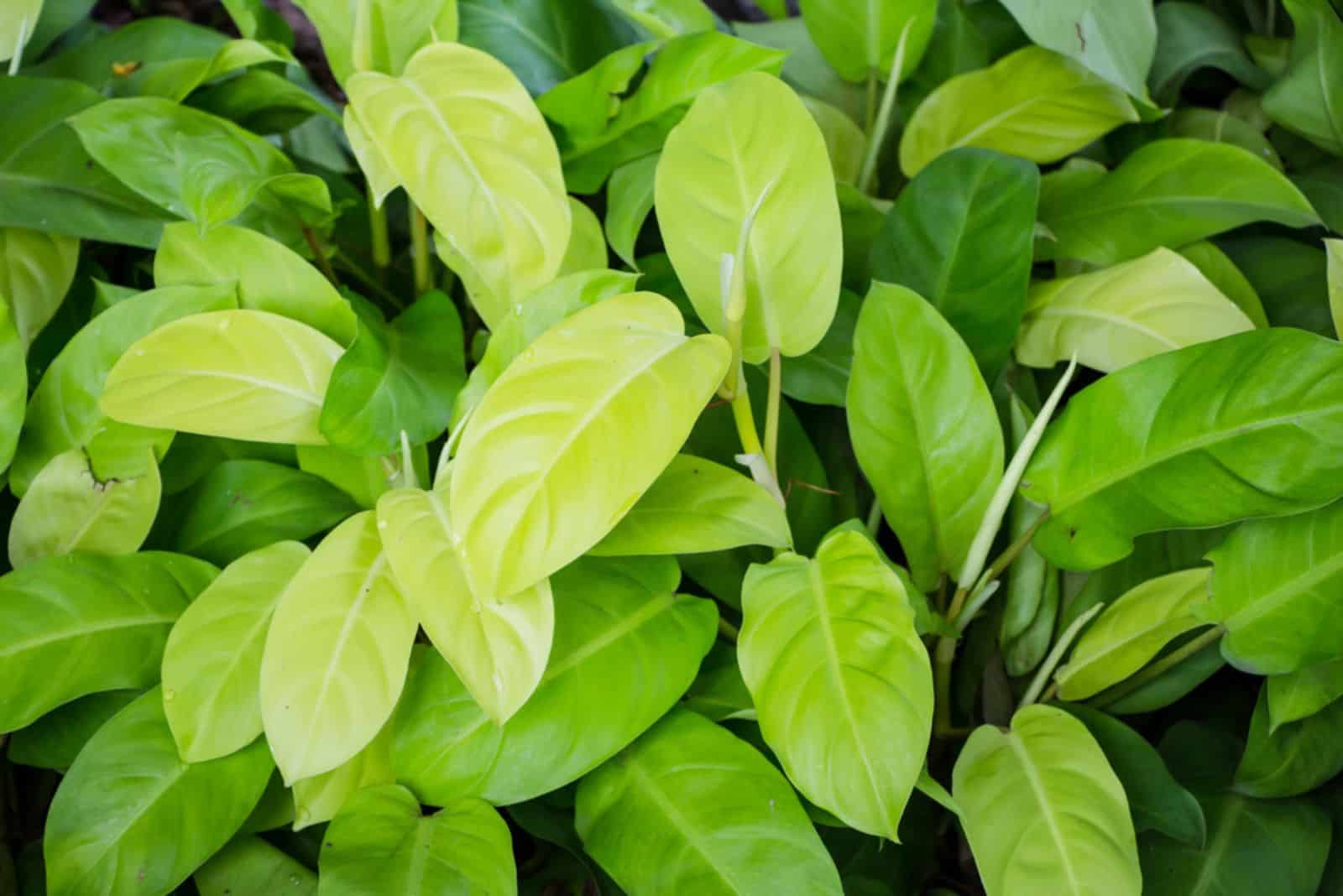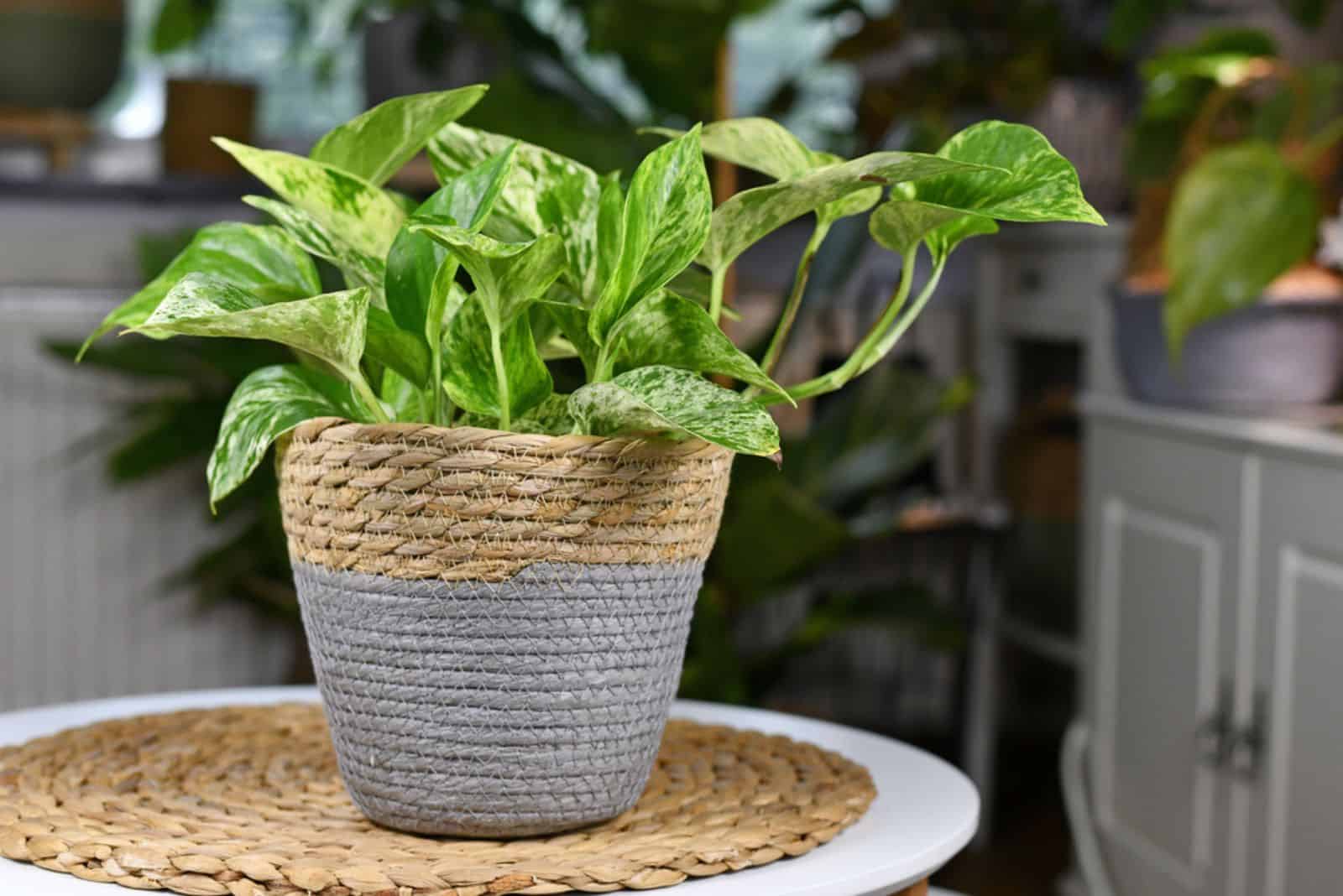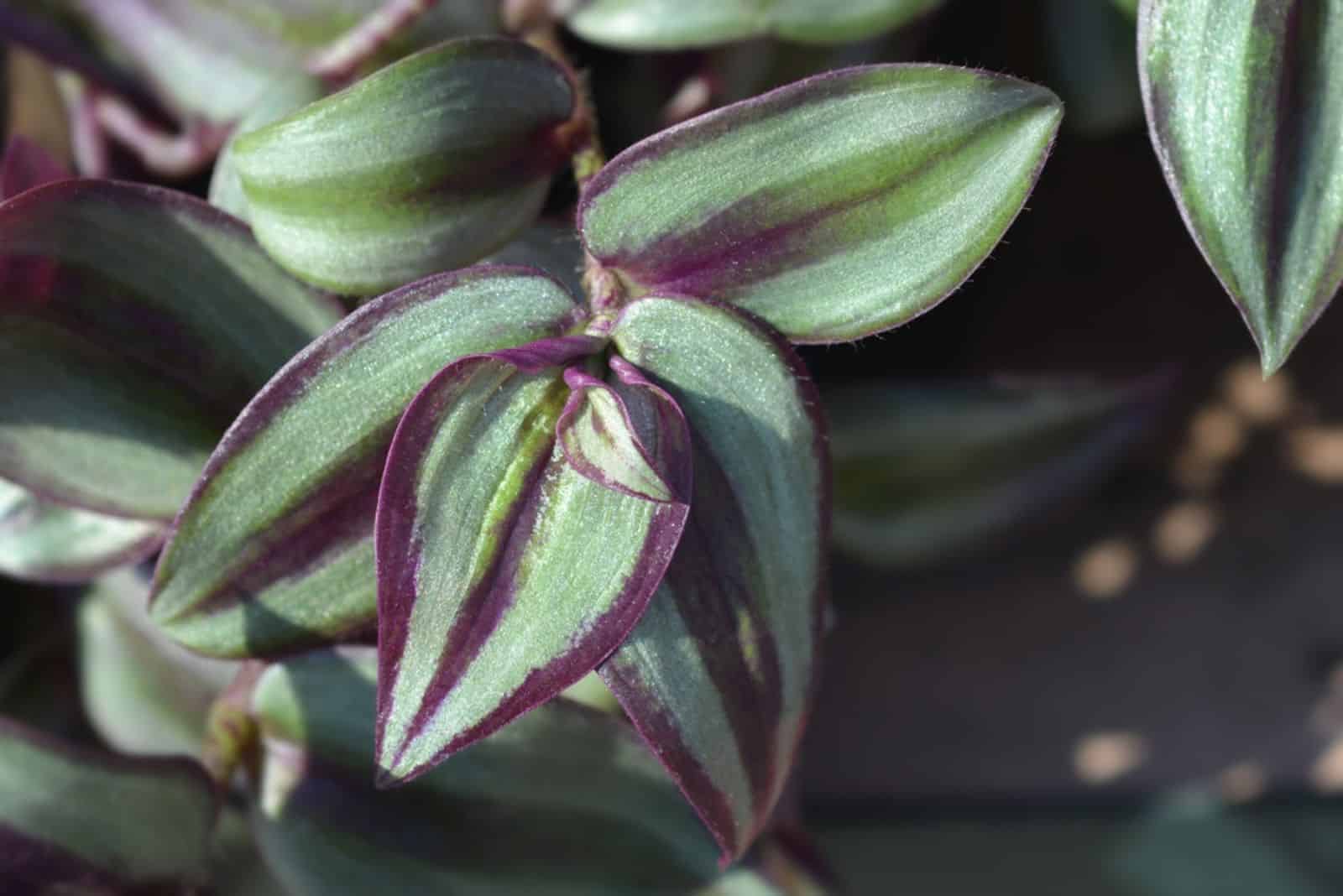If you are looking to grow beautiful plants indoors without the hassle of traditional soil-based gardening, then you have come to the right place!
Even though it might seem like every plant requires soil for proper growth; spider plants, philodendrons, pothoses, and many others can actually grow in water perfectly fine.
Not only does this provide an interesting and aesthetic element to your home decor, but it also offers several benefits such as easy maintenance and the opportunity to observe root growth.
In this article, we are going to cover some of the prettiest plants that can grow in water, so stay tuned!
1. Spider Plant
The Spider plant, otherwise known as Chlorophytum comosum, is a low-maintenance plant that is commonly grown in households. They need some moderate lighting and water to keep them going.
These plants are also known for their easy propagation – they produce spiderettes that can be cut from the main plant and simply put in a jar of water to let the roots develop. After roots have developed, you can transfer it into soil or keep the plant in the water.
If you decide on the latter option, you should start with buying a container without drainage holes to keep the water in, adding some decorative rocks, marbles, or clay pebbles to hold the roots in place, and applying a hydroponics fertilizer.
Your plant should be placed inside the container along with some decorative rocks. Some additional stones should be added to the container to support the plant.
Place the container on a windowsill where it can receive enough indirect sunlight. My Purple spider plant can tolerate some low light conditions as well!
2. English Ivy
Even though it is commonly grown outdoors, English ivy can also thrive indoors!
Hedera helix is a lovely plant that produces long vines and glossy green leaves. They are known for their prolific growth (sometimes they can get invasive in the garden). However, you can easily grow them in a glass of water, too.
Even though these plants can’t stand overwatering, they don’t seem to mind growing in water supported by LECA clay balls and rocks.
You should start off with water propagation instead of moving the entire plant to the water. Take a cutting that is between 4 to 6 inches long and submerge it into water.
Whether you propagated it or just transplanted it from the soil, the plant still needs nutrients, especially in a hydroponic system. Add some fertilizer during spring and summer and replace the water regularly.
3. Philodendron
I bet that there is no gardener out there who hasn’t heard about philodendrons. These are the most popular tropical plants and are known for their unique foliage and easy maintenance. However, most folks don’t know that philodendrons can also be grown solely in water.
Since they thrive in humid environments, they are the perfect candidate for this!
You can submerge the entire plant (make sure to clean the roots), or take the cutting and put it in some water. If you took a cutting, simply put it somewhere nice and warm.
Change the water regularly until roots have developed. Don’t forget to add some fertilizer to boost their growth.
Due to the fact that philodendrons grown in water only require irrigation about once per month, this will save you some time as you won’t have to water your plants every other day.
Simply water them occasionally, and the water from the container will evaporate and increase the air’s moisture content. You won’t need to mist this plant or buy pricey humidifiers.
If you own a Birkin philodendron, then check out: Best Philodendron Birkin Propagation Methods + Pro Tips
4. Chinese Evergreen
With so many Aglaonema species out there, it can sometimes be hard to identify them. Nonetheless, they are all beautiful and can really spruce up your garden or indoor living space.
These plants have thick stems and large leaves which allow them to grow in water. You can also submerge the entire plant or start off with a cutting first. Keep it in a spot with bright, indirect sunlight.
If the light is too low, the plant might stop growing. Every time you change the water, you should add fertilizer because water doesn’t naturally contain any of the nutrients this plant requires. The water should be changed at least once a month.
5. Pothos
Here is yet another group of tropical plants that are easy to propagate. These lovely plants have trailing growth habits and exhibit golden green leaves that everybody absolutely loves.
They are propagated just like any other plant – you take a healthy stem cutting, remove the bottom leaves, and put it in the water. Then, place it somewhere bright and warm. You will be able to see the pothos roots development quickly!
If you want to keep growing your pothos in water, then you should support it with clay pebbles. Fertilize the plant every time you add some more water. Don’t forget to clean the glass container!
6. Dumb Cane
Dumb cane are beautiful houseplants that produce bright green leaves with various variegations. This plant can grow in water, even though it might not reach its regular size.
Nevertheless, that makes it more compact and ideal for placement in places where you wouldn’t typically think to put this plant, including side tables.
Similarly to other plants, you can propagate it or clean the roots and put the entire plant in the water. It is important to change the water regularly in order to avoid bacteria and algae growth.
Don’t forget to use fertilizer because water doesn’t contain nutrients, so feeding your plants with hydroponic fertilizer is necessary to guarantee healthy growth and development.
7. Wandering Jew
The Wandering Jew, also called the Silver inch plant or Wandering dude, is a beautiful plant that exhibits prominent silver and purple leaves with stripes. It looks amazing in hanging baskets, glass containers, or regular pots.
Before putting this plant in water, first make sure the roots are clear. After that, put something in the glass jar to hold the roots in place, like stones, gravel, rocks, styrofoam, or LECA clay balls, and then fill the jar with water until the roots are completely submerged.
Keep the container in a place with plenty of bright, indirect light. You can shape it with pruning, but you should never remove more than one-third of the plant’s foliage at once because that will make it harder for it to photosynthesize.
If you want to know more about Wandering jew propagation, then check out: 3 Steps To Propagating The Inch Plant And Care Tips
8. Coleus Plant
We are ending our list with the gorgeous, colorful Coleus plant. It is often grown outdoors to add color into the garden, though it can be easily grown indoors as well.
The coleus plant can be propagated from cuttings and then put in water. All you have to do is add some hydroponic fertilizer anytime you change or fill the water.
Placing the container on an east-facing windowsill will allow the plant to enjoy the moderate morning sun while protected from the intense afternoon sun and heat.
Don’t expose this plant to either too much or too little sunshine because it can weaken it and cause its leaves to turn pale (and these plants are all about their leaves).

